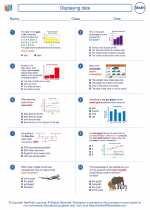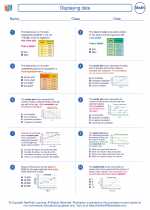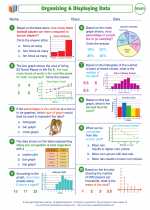Displaying data -> combinations
Combinations
What are Combinations?
Combinations are a way to calculate the number of ways to choose a subset of items from a larger set, without considering the order of selection. In other words, combinations are used to count the number of ways to select a certain number of items from a larger group, where the order of selection does not matter.
Formula for Combinations
The formula to calculate the number of combinations of n items taken r at a time is given by:
\[C(n, r) = \frac{n!}{r!(n-r)!}\]
Where:
- n is the total number of items
- r is the number of items to be chosen
- ! represents the factorial of a number
Example
For example, if you have 5 different colors of pens and you want to choose 2 of them, you can calculate the number of different pairs of pens you can choose using the combination formula:
\[C(5, 2) = \frac{5!}{2!(5-2)!} = \frac{5 \times 4}{2 \times 1} = 10\]
So, there are 10 different combinations of 2 pens that can be chosen from 5 different colors.
Properties of Combinations
Some important properties of combinations include:
- Combinations are unordered selections.
- The number of combinations is always less than or equal to the number of permutations (where order matters).
- Choosing 0 items from a set results in 1 combination (the empty set).
- Choosing all items from a set results in 1 combination (the entire set itself).
Study Guide
When studying combinations, it's important to understand the concept of choosing items without considering the order of selection. You should also be familiar with the combination formula and how to apply it to different scenarios. Additionally, practice solving problems involving combinations to reinforce your understanding of the topic.
Here are some key points to focus on while studying combinations:
- Understanding the difference between combinations and permutations.
- Mastering the combination formula and its application in various problems.
- Recognizing situations where combinations are used, such as in counting the number of ways to form a committee, select a team, or choose a subset of items.
By grasping these concepts and practicing problems related to combinations, you will be well-prepared to tackle any questions or exercises on this topic.
[Combinations] Related Worksheets and Study Guides:
.◂Math Worksheets and Study Guides Eighth Grade. Displaying data

 Worksheet/Answer key
Worksheet/Answer key
 Worksheet/Answer key
Worksheet/Answer key
 Worksheet/Answer key
Worksheet/Answer key
 Worksheet/Answer key
Worksheet/Answer key
